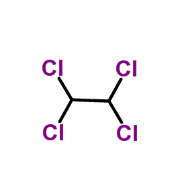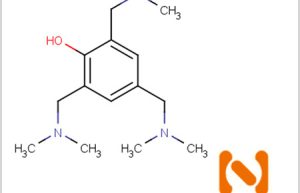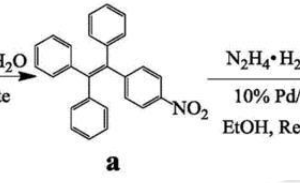
MT027571,1,2,2-Tetrachloroethane 79-34-5
English name: 1,1,2,2-Tetrachloroethane Common aliases: Symmetric tetrachloroethane; tetrachloroethane; tetrachloroethane; asymmetric tetrachloroethane; 1,1,2,2-tetrachloroethane CAS number: 79-34-5 Boiling point: 142.0±8.0 °C at 760 mmHg MDL number: Melting point: -43 °C Molecular formula: C2H2Cl2 Flash point: 42.6±15.8 °C Molecular weight: 167.85 Density: 1.6±0.1 g/cm3 Physical and chemical properties: Storage conditions:

The market size of 1,2,3,4-tetrahydroquinoline has grown steadily and the growth rate remains strong during the 14th Five-Year Plan period.
The molecular formula of 1,2,3,4-tetrahydroquinoline is C9H11N, and its English name is 1,2,3,4-Tetrahydroquinoline. It is a light yellow or colorless liquid at room temperature and is an organic intermediate and pharmaceutical intermediate. 1,2,3,4-Tetrahydroquinoline compounds synthesized from 1,2,3,4-tetrahydroquinoline are important nitrogen-containing heterocyclic compounds with various biological activities and can be used to prevent and treat arteriosclerosis. , hyperlipidemia, arrhythmia and other diseases; in addition, the structure of…

2,3-Butanediol preparation technology continues to be optimized, and industry development will shift towards greening and high purification.
2,3-Butanediol, also known as 2,3-dihydroxybutane or dimethylene glycol, is a very important chemical raw material. It appears as a colorless liquid and is slightly soluble in water, ethanol, ether, Acetone is hygroscopic and sensitive to air. 2,3-Butanediol is a chiral compound with two chiral carbon atoms in the molecule and three optical isomers. 2,3-Butanediol is widely used in chemical solvents, chemical industry, food additives, liquid fuels,…

As environmental pressure increases, the 3-amino-1,2,4-triazole industry can seek support from the pharmaceutical field
3-Amino-1,2,4-triazole (Amitrole), also known as fenfossil, is a white crystalline powder non-selective herbicide with a molecular formula of C2H4N4. It is especially suitable for use as a cotton defoliant. In addition, because 3-amino-1,2,4-triazole has strong chelating properties, photosensitivity and biological activity, 3-amino-1,2,4-triazole can also be used as a photographic reagent, dispersion Dyes, resin curing agents, special biochemical reagents, etc. are also an organic synthesis…

2,6-di-tert-butyl-4-ethylphenol has promising market prospects and large export volume
2,6-di-tert-butyl-4-ethylphenol (2,6-di-tert-butyl-4-ethylphenol), also known as 2,6-di-tert-butyl-4-ethylphenol, antioxidant BHEB, CAS The number is 4130-42-1, the molecular formula is C16H26O, and the molecular weight is 234.377. It is a gray-white crystalline entity, soluble in toluene, hexane, butanol, and insoluble in water. 2,6-di-tert-butyl-4-ethylphenol is mainly used in natural rubber, synthetic rubber and latex, and can also be used in plastics, etc. From a market perspective, 2,6-di-tert-butyl-4-ethylphenol products are widely…

2,6-Difluorobenzamide (DFBA) is mainly used in pesticide production, with global production capacity concentrated in China.
2,6-Difluorobenzamide, referred to as DFBA, is a chemical substance with the chemical formula C7H5F2NO. It appears as a white to off-white powder. It is insoluble in water, easily soluble in organic solvents such as ethanol and acetone, and slightly soluble in benzene. 2,6-Difluorobenzamide is a key intermediate for the synthesis of benzoylurea insecticide chemical pesticides, including diflubenzuron, lufenuron, etoxazole, etc., and the market demand is huge.…

2,4,6-tris(dimethylaminomethyl)phenol/CAS 90-72-2/DMP-30
2,4,6-tris(dimethylaminomethyl)phenol/CAS 90-72-2/DMP-30 Overview: 2,4,6-Tris(dimethylaminomethyl)phenol is a chemical substance with a molecular weight of 265.40. Chinese name: 2,4,6-Tris(dimethylaminomethyl)phenol Alias: 2,4,6-Tris(dimethylaminomethyl)phenol CAS:90-72-2 Catalyst TMR-30 Polyurethane Catalyst TMR-30 Dimethylaminomethyl Phenol Dabco TMR-30 PC CAT NP30, 2,4,6-Tris(dimethylaminomethyl)phenol, CAS:90-72-2, Catalyst TMR-30, Polyurethane Catalyst TMR -30, Dimethylaminomethylphenol, Dabco TMR-30, PC CAT NP30, TMR-30, Semi-hard foam catalyst TMR-30, Hard foam catalyst TMR-30, DABCO TMR English name: 2,4,6-tris(dimethylaminomethyl)phenol Relative molecular mass: 265.4 Molecular Formula:…

2,4-Dichlorophenoxyacetic acid (2,4-D) is widely used as a herbicide and my country is the world’s leading producer.
2,4-Dichlorophenoxyacetic acid, referred to as 2,4-D, is an organic compound with the chemical formula C8H6Cl2O3. It appears as a white to yellow crystalline powder, slightly soluble in water and oil, and soluble in ethanol. 2,4-Dichlorophenoxyacetic acid is a common chemical product, mainly used in the agricultural field as a herbicide, plant growth promoter, etc. At present, the mainstream production technology route of 2,4-dichlorophenoxyacetic acid is chemical…

2,6-Dichloroaniline market size declines and industry development prospects are average
The chemical formula of 2,6-dichloroaniline is C6H5Cl2N, CAS number is 608-31-1, molecular weight is 162.02, density is 1275g/cm3, melting point is 36-38℃, boiling point is 228℃, appearance is white needle-like crystal, product It is soluble in organic solvents such as alcohol and ketone, and slightly soluble in water. It is an irritating chemical that is toxic and harmful to the environment. There are many production routes…

Preparation of 1-(4-aminobenzene)-1,2,2-tristyrene_Kain Industrial Additive
Background and overview[1] 1-(4-Aminobenzene)-1,2,2-tristyrene can be used as a synthetic intermediate, such as the preparation of tetraphenylethene (TPE) compounds. Tetraphenylethene compounds have large In a conjugated system, the four benzene rings of the molecule are connected to the same isolated double bond. Due to the existence of steric hindrance, the benzene rings are twisted with each other, so the molecule takes on the shape of a…



